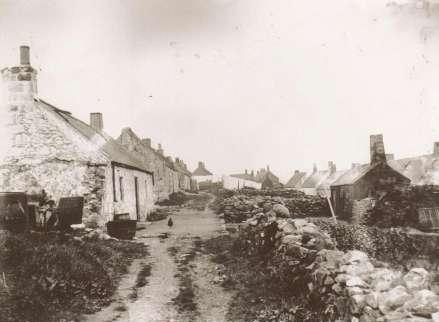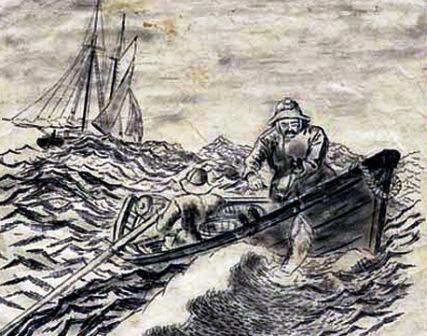
Loss of a Creel Boat (1891) |
You will have noticed that, up to this point, the shipwrecks, loss of life and narrow escapes have mostly related to the local white fishers or to vessels that were passing our area. Does this mean that creel fishing was safer and less likely to result in loss of life? Unfortunately that’s not the case and many, many men have been lost fishing their creels over the years.
 One of the differences between the creel boats and those
of the white fishers was the numbers they had in their crews. A fishing
yawl was likely to have a crew of up to six men whereas a creel boat was
usually manned by only one or two. Any creel boat that was lost was
likely to warrant even less column inches in the press than the bigger
boats and therefore finding records for those incidents, if there were
records at all, proved to be quite a challenge.
One of the differences between the creel boats and those
of the white fishers was the numbers they had in their crews. A fishing
yawl was likely to have a crew of up to six men whereas a creel boat was
usually manned by only one or two. Any creel boat that was lost was
likely to warrant even less column inches in the press than the bigger
boats and therefore finding records for those incidents, if there were
records at all, proved to be quite a challenge.
My own theory is that loss of life whilst creel fishing would have been quite regular due to the nature of that type of fishing and the need to get quite close to the rocks. There was no such thing as a powerful outboard engine to get you out of danger in those days and the fishers were totally reliant on manpower, use of oars and the occasional sail.
In July 1891, the Downies boat “Rose in June” was swamped by a large wave whilst creel fishing near the coast. The occupants were two young men, Alexander Wood and William Main, who came from the same village and both men were drowned. This was another blow to the small village of Downies coming eleven years after the Late Gale when nine villagers perished.
It’s clear to see that the survival ratio for these fishermen was quite poor in those days and a large proportion of the population were likely to die in an accident at sea before they reached old age. I’m not suggesting that it was only the villages of Portlethen, Downies and Findon that suffered these fates because similar accidents were happening at sea all along the country’s coasts – it was perhaps more noticeable in our villages because of the small populations that lived here.